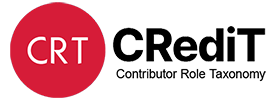Лазерне мікротекстурування та ШІ-оптимізація терморегуляції фотоелектричних систем
DOI:
https://doi.org/10.15421/cims.4.320Ключові слова:
лазерне мікротекстурування, пристрої відновлюваної енергетики, охолодження фотоелектричних систем, теплове керування, штучний інтелект, оптимізаціяАнотація
Мета. Фотоелектричні (PV) та інші відновлювані енергетичні системи втрачають ефективність і надійність через перегрів. У цьому огляді наголошується на необхідності розробки масштабованих інтегрованих рішень для теплового керування. Дизайн / Метод / Підхід. Розглянуто останні досягнення лазерного мікротекстурування поверхонь як перспективного підходу до регулювання тепла. Контрольовані мікро- та наноструктури підвищують відведення тепла, збільшують площу поверхні та впливають на змочуваність. Досліджено також можливості штучного інтелекту (ШІ) для прогнозування, проєктування та оптимізації лазерних текстур з метою одночасного покращення теплових, оптичних і механічних властивостей. Результати. Лазерно оброблені поверхні забезпечують конвективне охолодження, анти-відбивання та самоочищення, але переважно демонструються на лабораторному рівні. Методи ШІ, включно з нейромережами, еволюційними алгоритмами та підкріплювальним навчанням, ефективні для прогнозування та багатокритеріальної оптимізації, відкриваючи шляхи для промислового застосування. Теоретичне значення. Огляд встановлює зв’язки морфології поверхні з тепло- та гідродинамікою і оптикою, показуючи, як цифрові двійники на основі ШІ перетворюють їх у прогнозовані та узагальнені моделі. Виділено перспективи моделювання взаємопов’язаних термооптичних ефектів і розвитку методів поверхневої інженерії на основі даних. Практичне значення. Інтеграція лазерного текстурування з оптимізацією на основі ШІ дозволяє вбудувати терморегуляцію в конструкцію пристроїв, зменшуючи потребу у зовнішньому охолодженні та підвищуючи надійність. Оригінальність / Цінність. Робота об’єднує лазерну обробку поверхні та оптимізацію за допомогою ШІ в єдину дорожню карту для пристроїв відновлюваної енергетики, виокремлюючи цифрові двійники та техніко-економічну оцінку як ключові фактори масштабування. Обмеження дослідження / Майбутні дослідження. Основні складнощі пов’язані з масштабуванням, довговічністю в жорстких умовах, обмеженістю навчальних наборів даних для ШІ та недостатністю аналізу життєвого циклу, що вимагає міждисциплінарної співпраці. Тип статті. Оглядова.
Завантажити
Посилання
Agostinelli, S., Ciulla, G., Salemi, A., & Borchiellini, R. (2021). Cyber-physical systems improving building energy management: Digital twin and artificial intelligence. Energies, 14(8), 2338. https://doi.org/10.3390/en14082338
Alao, K. T., Shittu, A., Zhang, Y., & Chen, L. (2025). Multi-method cooling strategies for photovoltaic systems: A comprehensive review of passive, active, and AI-optimized hybrid techniques. Multiscale and Multidisciplinary Modeling, Experiments and Design, 8(8), 1–42. https://doi.org/10.1007/s41939-025-00941-w
Alqatamin, A., & Su, J. (2025). Numerical analysis and design of photovoltaic-thermal (PVT) system with novel water-cooling channel structure integrated with perforated V-shape fins. Renewable Energy, 243, 122587. https://doi.org/10.1016/j.renene.2025.122587
Al-Shamkhee, D., Ahmed, S., Kadhim, A., & Ali, H. (2022). Passive cooling techniques for ventilation: An updated review. Renewable Energy and Environmental Sustainability, 7, 23. https://doi.org/10.1051/rees/2022011
Al-Ugla, A. A., Bin Mahfouz, A. A., Said, S. A. M., & Al-Sulaiman, F. A. (2016). Techno-economic analysis of solar-assisted air-conditioning systems for commercial buildings in Saudi Arabia. Renewable and Sustainable Energy Reviews, 54, 1301–1310. https://doi.org/10.1016/j.rser.2015.10.047
Andueza, Á., Zubia, J., Arrue, J., & Illarramendi, M. A. (2021). Enhanced thermal performance of photovoltaic panels based on glass surface texturization. Optical Materials, 121, 111511. https://doi.org/10.1016/j.optmat.2021.111511
Ascencio-Vásquez, J., Köntges, M., Morales, D., & Gutiérrez, J. (2019). Global climate data processing and mapping of degradation mechanisms and degradation rates of PV modules. Energies, 12(24), 4749. https://doi.org/10.3390/en12244749
Asfahan, H. M., Ali, M. A., & Khan, A. (2021). Artificial intelligence for the prediction of the thermal performance of evaporative cooling systems. Energies, 14(13), 3946. https://doi.org/10.3390/en14133946
Astrup, T. F., Møller, J., Fruergaard, T., & Christensen, T. H. (2015). Life cycle assessment of thermal waste-to-energy technologies: Review and recommendations. Waste Management, 37, 104–115. https://doi.org/10.1016/j.wasman.2014.06.011
Aswin, K., Kallath, A., Adithyan, P., & Dayal, A. (2025). Comparison of recent trends in cooling of photovoltaic cells to increase its performance. International Journal of Scientific Development and Research, 10(4), e82-e95. https://doi.org/10.56975/ijsdr.v10i4.302395
Attia, S., Bilir, S., Loonen, R., & Hensen, J. (2022). Comparison of thermal energy saving potential and overheating risk of four adaptive façade technologies in office buildings. Sustainability, 14(10), 6106. https://doi.org/10.3390/su14106106
Auld, G., Mallett, A., Burlica, B., Slater, R., & Cashore, B. (2014). Evaluating the effects of policy innovations: Lessons from a systematic review of policies promoting low-carbon technology. Global Environmental Change, 29, 444–458. https://doi.org/10.1016/j.gloenvcha.2014.03.002
Bennear, L. S., & Stavins, R. N. (2007). Second-best theory and the use of multiple policy instruments. Environmental and Resource Economics, 37(1), 111–129. https://doi.org/10.1007/s10640-007-9110-y
Besheer, A. H., Yousef, M. S., & Huzayyin, A. S. (2016). Review on recent approaches for hybrid PV/T solar technology. International Journal of Energy Research, 40(15), 2038–2053. https://doi.org/10.1002/er.3567
Bezaatpour, J., Heidari, A., Mousavi, S., & Rahimi, M. (2025). Strategic mitigation of temperature-induced efficiency losses in large-scale photovoltaic facades. Energy, 137792. https://doi.org/10.1016/j.energy.2025.137792
Bhat, I. K., & Prakash, R. (2009). LCA of renewable energy for electricity generation systems—A review. Renewable and Sustainable Energy Reviews, 13(5), 1067–1073. https://doi.org/10.1016/j.rser.2008.08.004
Bonse, J., Kirner, S. V., & Krüger, J. (2020). Laser-induced periodic surface structures (LIPSS). In Sugioka, K. (Ed.), Handbook of laser micro- and nano-engineering (pp. 1–59). Springer. https://doi.org/10.1007/978-3-319-69537-2_17-1
Busch, P.-O., Jörgens, H., & Tews, K. (2005). The global diffusion of regulatory instruments: The making of a new international environmental regime. The Annals of the American Academy of Political and Social Science, 598(1), 146–167. https://doi.org/10.1177/0002716204272355
Chen, Z., Liu, W., Wu, Q., & Sun, Y. (2022). Picosecond laser treated aluminium surface for photothermal seawater desalination. Desalination, 528, 115561. https://doi.org/10.1016/j.desal.2022.115561
Chen, Z., Wang, L., Yang, S., & Zhang, L. (2022). A short review on functionalized metallic surfaces by ultrafast laser micromachining. The International Journal of Advanced Manufacturing Technology, 119(11), 6919–6948. https://doi.org/10.1007/s00170-021-08560-8
Coblas, D. G., Silva, F. J. G., Campilho, R. D. S. G., & Pereira, M. T. (2015). Manufacturing textured surfaces: State of art and recent developments. Proceedings of the Institution of Mechanical Engineers, Part J: Journal of Engineering Tribology, 229(1), 3–29. https://doi.org/10.1177/1350650114542242
Conradi, M., Skocaj, D., Jovanovic, Z., & Drevensek, M. (2019). Short-and long-term wettability evolution and corrosion resistance of uncoated and polymer-coated laser-textured steel surface. Coatings, 9(9), 592. https://doi.org/10.3390/coatings9090592
Feng, S. C., Zhang, Y., Guo, J., & Lin, F. (2023). Functional requirements of software tools for laser-based powder bed fusion additive manufacturing for metals. Journal of Computing and Information Science in Engineering, 23(3), 031005. https://doi.org/10.1115/1.4054933
Figgis, B., & Bermudez, V. (2021). PV coating abrasion by cleaning machines in desert environments—Measurement techniques and test conditions. Solar Energy, 225, 252–258. https://doi.org/10.1016/j.solener.2021.07.039
Fillion, R. M., Riahi, A. R., & Edrisy, A. (2014). A review of icing prevention in photovoltaic devices by surface engineering. Renewable and Sustainable Energy Reviews, 32, 797–809. https://doi.org/10.1016/j.rser.2014.01.015
Ghalandari, M., Ahmadi, M. H., Pourkiaei, S. M., & Chen, L. (2020). Applications of nanofluids containing carbon nanotubes in solar energy systems: A review. Journal of Molecular Liquids, 313, 113476. https://doi.org/10.1016/j.molliq.2020.113476
Graham, D., & Woods, N. (2006). Making corporate self-regulation effective in developing countries. World Development, 34(5), 868–883. https://doi.org/10.1016/j.worlddev.2005.04.022
Grillo, F., Wirth, C., Behnam, M., & Fransen, L. (2024). Standardization: Research trends, current debates, and interdisciplinarity. Academy of Management Annals, 18(2), 788–830. https://doi.org/10.5465/annals.2023.0072
Guo, C., Zhang, M., & Hu, J. (2022). Fabrication of hierarchical structures on titanium alloy surfaces by nanosecond laser for wettability modification. Optics & Laser Technology, 148, 107728. https://doi.org/10.1016/j.optlastec.2021.107728
Gupta, N., & Tiwari, G. N. (2016). Review of passive heating/cooling systems of buildings. Energy Science & Engineering, 4(5), 305–333. https://doi.org/10.1002/ese3.129
Hemeida, M. G., Abdelaziz, E. A., Elsayed, A. H., & Salem, M. A. (2022). Renewable energy resources technologies and life cycle assessment. Energies, 15(24), 9417. https://doi.org/10.3390/en15249417
Hu, M., Chen, J., Zhao, J., & Wang, Y. (2016). Experimental study of the effect of inclination angle on the thermal performance of heat pipe photovoltaic/thermal (PV/T) systems with wickless heat pipe and wire-meshed heat pipe. Applied Thermal Engineering, 106, 651–660. https://doi.org/10.1016/j.applthermaleng.2016.06.003
Huang, Y., & Schmid, S. R. (2018). Additive manufacturing for health: State of the art, gaps and needs, and recommendations. Journal of Manufacturing Science and Engineering, 140(9), 094001. https://doi.org/10.1115/1.4040430
Jakhar, S., Paliwal, M. K., & Kumar, M. (2023). Machine learning predictive models for optimal design of photovoltaic/thermal collector with nanofluids based geothermal cooling. Environmental Progress & Sustainable Energy, 42(5), e14131. https://doi.org/10.1002/ep.14131
Jalil, S. A., Ahmed, M., Ali, M., & Khan, S. (2020). Spectral absorption control of femtosecond laser-treated metals and application in solar-thermal devices. Light: Science & Applications, 9(1), 14. https://doi.org/10.1038/s41377-020-0242-y
Ji, M., Chen, R., Zhang, Y., & Wang, J. (2024). Prediction and optimization kerf width in laser beam machining of titanium alloy using genetic algorithm tuned adaptive neuro-fuzzy inference system. The International Journal of Advanced Manufacturing Technology, 132(11), 5873–5893. https://doi.org/10.1007/s00170-024-13681-x
Jo, H. H., Kim, H. J., Park, J., & Lee, S. (2022). Application and evaluation of phase change materials for improving photovoltaic power generation efficiency and roof overheating reduction. Renewable Energy, 195, 1412–1425. https://doi.org/10.1016/j.renene.2022.06.119
Joe, D. J., Lee, J. H., Lee, K., & Kim, S. (2017). Laser-material interactions for flexible applications. Advanced Materials, 29(26), 1606586. https://doi.org/10.1002/adma.201606586
Joo, H.-J., An, Y.-S., Kim, M.-H., & Kong, M. (2023). Long-term performance evaluation of liquid-based photovoltaic thermal (PVT) modules with overheating-prevention technique. Energy Conversion and Management, 296, 117682. https://doi.org/10.1016/j.enconman.2023.117682
Jordan, D. C., Kurtz, S. R., Wohlgemuth, J., & VanSant, K. (2019). PV degradation – Mounting & temperature. In 2019 IEEE 46th Photovoltaic Specialists Conference (PVSC) (pp. 1–6). IEEE. https://doi.org/10.1109/PVSC40753.2019.8980767
Kahoul, N., Houabes, M., & Sadok, M. (2014). Assessing the early degradation of photovoltaic modules performance in the Saharan region. Energy Conversion and Management, 82, 320–326. https://doi.org/10.1016/j.enconman.2014.03.034
Kalinowski, A., Nowak, M., & Wróbel, R. (2023). Laser surface texturing: Characteristics and applications. System Safety: Human-Technical Facility-Environment, 5(1), 240–248. https://doi.org/10.2478/czoto-2023-0026
Kavousi-Fard, A., Ahmadi, M., & Samadi, A. (2024). Digital twin for mitigating solar energy resources challenges: A perspective. Solar Energy, 274, 112561. https://doi.org/10.1016/j.solener.2024.112561
Kempe, M. D., & Wohlgemuth, J. H. (2013). Evaluation of temperature and humidity on PV module component degradation. In 2013 IEEE 39th Photovoltaic Specialists Conference (PVSC) (pp. 1–6). IEEE. https://doi.org/10.1109/PVSC.2013.6744112
Kenfack, A. Z., Ntep, F. A., Fokam, R. B., & Talla, P. K. (2025). Design of a meta-heuristic artificial intelligence (AI) model for an optimal photovoltaic module cooling system. Discover Applied Sciences, 7(4), 269. https://doi.org/10.1007/s42452-025-06696-w
Khan, S. Y., Ali, M., Farooq, R., & Rehman, A. U. (2025). Revolutionizing solar photovoltaic efficiency: A comprehensive review of cutting-edge thermal management methods for advanced and conventional solar photovoltaic. Energy & Environmental Science. https://doi.org/10.1039/d4ee03525a
Kim, J. E., & Tang, T. (2020). Preventing early lock-in with technology-specific policy designs: The Renewable Portfolio Standards and diversity in renewable energy technologies. Renewable and Sustainable Energy Reviews, 123, 109738. https://doi.org/10.1016/j.rser.2020.109738
Lämmle, M. (2019). Thermal management of PVT collectors: Development and modelling of highly efficient glazed, flat plate PVT collectors with low-emissivity coatings and overheating protection (Doctoral dissertation, Fraunhofer-Institut für Solare Energiesysteme ISE, Stuttgart). Fraunhofer Verlag. https://doi.org/10.24406/publica-fhg-282606
Li, S., Zhang, X., Huang, J., & Zhou, T. (2021). A method for accurately assessing field performance degradation of PV modules in different geographical regions. Sustainable Energy Technologies and Assessments, 48, 101638. https://doi.org/10.1016/j.seta.2021.101638
Liang, Z., Wang, C., Li, J., & Zhao, H. (2023). Aluminum-based heterogeneous surface for efficient solar desalination and fog harvesting processed by a picosecond laser. ACS Applied Materials & Interfaces, 15(39), 46195–46204. https://doi.org/10.1021/acsami.3c08121
Liu, Z., Zhao, Y., Chen, H., & Wang, H. (2022). Metal surface wettability modification by nanosecond laser surface texturing: A review. Biosurface and Biotribology, 8(2), 95–120. https://doi.org/10.1049/bsb2.12039
Magalhães, P. M. L. P., Martins, J. F. A., & Joyce, A. L. M. (2016). Comparative analysis of overheating prevention and stagnation handling measures for photovoltaic-thermal (PV-T) systems. Energy Procedia, 91, 346–355. https://doi.org/10.1016/j.egypro.2016.06.282
Mahian, O., Kianifar, A., Kalogirou, S. A., Pop, I., & Wongwises, S. (2013). A review of the applications of nanofluids in solar energy. International Journal of Heat and Mass Transfer, 57(2), 582–594. https://doi.org/10.1016/j.ijheatmasstransfer.2012.10.037
Mallikarjuna, K., Reddy, V., Kumar, M., & Rao, P. (2021). A nanofluids and nanocoatings used for solar energy harvesting and heat transfer applications: A retrospective review analysis. Materials Today: Proceedings, 37, 823–834. https://doi.org/10.1016/j.matpr.2020.05.833
Mani, M., Lyons, K. W., & Gupta, S. K. (2014). Sustainability characterization for additive manufacturing. Journal of Research of the National Institute of Standards and Technology, 119, 419. https://doi.org/10.6028/jres.119.016
Mebarek-Oudina, F., & Chabani, I. (2022). Review on nano-fluids applications and heat transfer enhancement techniques in different enclosures. Journal of Nanofluids, 11(2), 155–168. https://doi.org/10.1166/jon.2022.1834
Napp, T. A., Gambhir, A., Hills, T. P., Florin, N., & Fennell, P. S. (2014). A review of the technologies, economics and policy instruments for decarbonising energy-intensive manufacturing industries. Renewable and Sustainable Energy Reviews, 30, 616–640. https://doi.org/10.1016/j.rser.2013.10.036
Nižetić, S., Grubišić-Čabo, F., Marinić-Kragić, I., & Čoko, D. (2021). A novel and effective passive cooling strategy for photovoltaic panel. Renewable and Sustainable Energy Reviews, 145, 111164. https://doi.org/10.1016/j.rser.2021.111164
Nižetić, S., Papadopoulos, A. M., & Giama, E. (2017). Comprehensive analysis and general economic-environmental evaluation of cooling techniques for photovoltaic panels, Part I: Passive cooling techniques. Energy Conversion and Management, 149, 334–354. https://doi.org/10.1016/j.enconman.2017.07.022
Obilor, A. F., et al. (2022). Micro-texturing of polymer surfaces using lasers: A review. The International Journal of Advanced Manufacturing Technology, 120(1), 103–135. https://doi.org/10.1007/s00170-022-08731-1
Omazic, A., Parikh, H., Deline, C., MacAlpine, S., & Alonso-Álvarez, D. (2019). Relation between degradation of polymeric components in crystalline silicon PV module and climatic conditions: A literature review. Solar Energy Materials and Solar Cells, 192, 123–133. https://doi.org/10.1016/j.solmat.2018.12.027
Pandian, A., Kumar, R., Kumar, S., & Gupta, P. (2016). Fire hazards and overheating caused by shading faults on photovoltaic solar panel. Fire Technology, 52(2), 349–364. https://doi.org/10.1007/s10694-015-0509-7
Perera, A. T. D., Attalage, R. A., Perera, K. K. C. K., & Sonnadara, D. U. J. (2019). Machine learning methods to assist energy system optimization. Applied Energy, 243, 191–205. https://doi.org/10.1016/j.apenergy.2019.03.202
Pfleging, W. (2020). Recent progress in laser texturing of battery materials: A review of tuning electrochemical performances, related material development, and prospects for large-scale manufacturing. International Journal of Extreme Manufacturing, 3(1), 012002. https://doi.org/10.1088/2631-7990/abca84
Qi, L., Zhang, H., Liu, Y., & Huang, W. (2021). Techno-economic assessment of photovoltaic power generation mounted on cooling towers. Energy Conversion and Management, 235, 113907. https://doi.org/10.1016/j.enconman.2021.113907
Rahmani, R., Momeni, M., Javidan, M., & Karimi, N. (2023). Overview of selective laser melting for Industry 5.0: Toward customizable, sustainable, and human-centric technologies. Machines, 11(5), 522. https://doi.org/10.3390/machines11050522
Rico Sierra, D., Edwardson, S. P., & Dearden, G. (2018). Laser surface texturing of titanium with thermal post-processing for improved wettability properties. Procedia CIRP, 74, 362–366. https://doi.org/10.1016/j.procir.2018.08.143
Rubahn, H.-G. (1999). Laser applications in surface science and technology. John Wiley & Sons. https://www.wiley.com/en-us/Laser+Applications+in+Surface+Science+and+Technology-p-9780471984504
Seid Ahmed, Y. (2024). Optimizing femtosecond texturing process parameters through advanced machine learning models in tribological applications. Lubricants, 12(12), 454. https://doi.org/10.3390/lubricants12120454
Shanmugam, N., Babu, M. R., Mohan, S., & Kumar, R. (2020). Anti-reflective coating materials: A holistic review from PV perspective. Energies, 13(10), 2631. https://doi.org/10.3390/en13102631
Sharaf, M., Yousef, M. S., & Huzayyin, A. S. (2022). Review of cooling techniques used to enhance the efficiency of photovoltaic power systems. Environmental Science and Pollution Research, 29(18), 26131–26159. https://doi.org/10.1007/s11356-022-18719-9
Sharma, P., Kumar, R., Singh, A., & Gupta, S. (2022). Recent advances in machine learning research for nanofluid-based heat transfer in renewable energy system. Energy & Fuels, 36(13), 6626–6658. https://doi.org/10.1021/acs.energyfuels.2c01006
Singh, S. C., & Guo, C. (2022). Femtosecond laser‐produced optical absorbers for solar‐thermal energy harvesting. EcoMat, 4(1), e12161. https://doi.org/10.1002/eom2.12161
Sohrabpoor, H., Mianehrow, H., Khodaygan, S., & Eslami, A. (2019). Improving precision in the prediction of laser texturing and surface interference of 316L assessed by neural network and adaptive neuro-fuzzy inference models. The International Journal of Advanced Manufacturing Technology, 104(9), 4571–4580. https://doi.org/10.1007/s00170-019-04291-z
Sugioka, K., & Cheng, Y. (2014). Femtosecond laser three-dimensional micro- and nanofabrication. Applied Physics Reviews, 1(4), 041303. https://doi.org/10.1063/1.4904320
Suwa, T. (2022). Transient heat transfer performance prediction using a machine learning approach for sensible heat storage in parabolic trough solar thermal power generation cycles. Journal of Energy Storage, 56, 105965. https://doi.org/10.1016/j.est.2022.105965
Toyserkani, E., & Rasti, N. (2015). Ultrashort pulsed laser surface texturing. In Laser surface engineering (pp. 441–453). Woodhead Publishing. https://doi.org/10.1016/B978-1-78242-074-3.00018-0
Van de Kaa, G., & Greeven, M. (2017). LED standardization in China and South East Asia: Stakeholders, infrastructure and institutional regimes. Renewable and Sustainable Energy Reviews, 72, 863–870. https://doi.org/10.1016/j.rser.2017.01.101
Vorobyev, A. Y., & Guo, C. (2013). Direct femtosecond laser surface nano/microstructuring and its applications. Laser & Photonics Reviews, 7(3), 385–407. https://doi.org/10.1002/lpor.201200017
Wang, Q., & Wang, H. (2022). Fabrication of textured surface with controllable wettability via laser-thermal hybrid processing. Materials Letters, 315, 131954. https://doi.org/10.1016/j.matlet.2022.131954
Wang, X., Li, Y., Chen, Q., & Zhang, J. (2019). Fabrication of micro/nano-hierarchical structures for droplet manipulation via velocity-controlled picosecond laser surface texturing. Optics and Lasers in Engineering, 122, 319–327. https://doi.org/10.1016/j.optlaseng.2019.06.021
Xu, H., Zhao, Y., Liu, J., & Zhang, W. (2021). Energy conversion performance of a PV/T-PCM system under different thermal regulation strategies. Energy Conversion and Management, 229, 113660. https://doi.org/10.1016/j.enconman.2020.113660
Xu, J., & Gong, J. (2023). Novel sustainable urban management framework based on solar energy and digital twin. Solar Energy, 262, 111861. https://doi.org/10.1016/j.solener.2023.111861
Xu, W., Bai, Y., & Yin, Y. (2018). Surface engineering of nanostructured energy materials. Advanced Materials, 30(48), 1802091. https://doi.org/10.1002/adma.201802091
Ye, J. Y., Tay, A., Hsiao, A., & Hameiri, Z. (2014). Performance degradation of various PV module technologies in tropical Singapore. IEEE Journal of Photovoltaics, 4(5), 1288–1294. https://doi.org/10.1109/JPHOTOV.2014.2338051
Yilbas, B. S., Arif, A. F. M., Ahmed, S. H., & Al-Qahtani, H. (2018). Laser texturing of Inconel 718 alloy surface: Influence of environmental dust in humid air ambient. Optics & Laser Technology, 108, 346–354. https://doi.org/10.1016/j.optlastec.2018.07.017
Yuan, W., Li, H., Zhou, Y., & Liu, Z. (2018). Comparison study of the performance of two kinds of photovoltaic/thermal (PV/T) systems and a PV module at high ambient temperature. Energy, 148, 1153–1161. https://doi.org/10.1016/j.energy.2018.01.121
Zayed, M. E., Aboelmaaref, M. M., & Chazy, M. (2023). Design of solar air conditioning system integrated with photovoltaic panels and thermoelectric coolers: Experimental analysis and machine learning modeling by random vector functional link coupled with white whale optimization. Thermal Science and Engineering Progress, 44, 102051. https://doi.org/10.1016/j.tsep.2023.102051
Zhao, B., Li, C., Wu, X., & Yang, X. (2020). Spectrally selective approaches for passive cooling of solar cells: A review. Applied Energy, 262, 114548. https://doi.org/10.1016/j.apenergy.2020.114548
Завантаження
Опубліковано
Номер
Розділ
Категорії
Ліцензія
Авторське право (c) 2025 Aswin Karkadakattil (Author)

Ця робота ліцензується відповідно до ліцензії Creative Commons Attribution 4.0 International License.
Всі статті, опубліковані в журналі Challenges and Issues of Modern Science, ліцензовані за ліцензією Creative Commons Attribution 4.0 International (CC BY). Це означає, що ви можете:
- Поширювати, копіювати та передавати статтю
- Адаптувати, реміксувати та створювати похідні роботи на основі статті
за умови, що ви надаєте належне посилання на оригінальну роботу, вказуєте ім'я авторів, назву статті, журнал та наявність ліцензії CC BY. Будь-яке використання матеріалів не повинно припускати схвалення авторами або журналом використаного матеріалу.



















